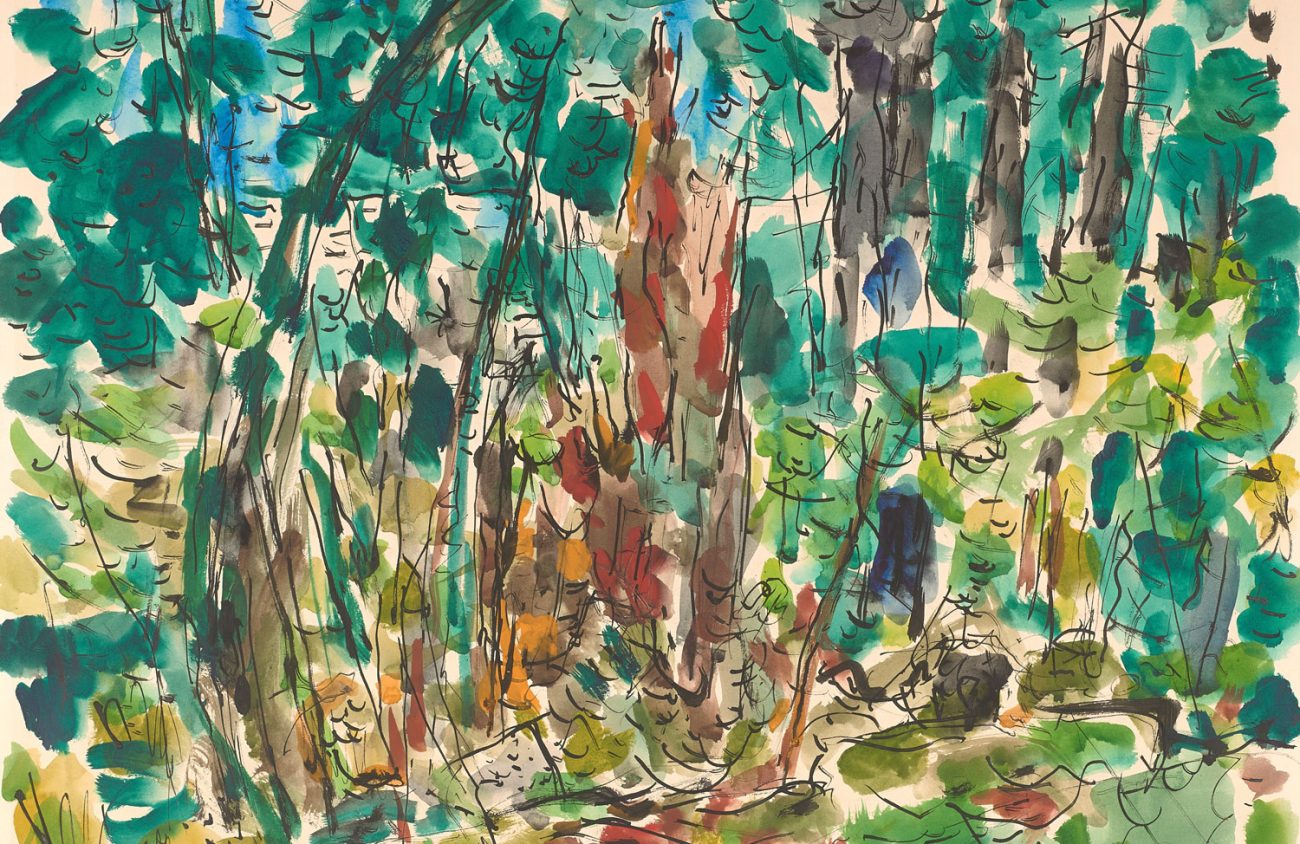Eugene’s Karin Clarke Gallery has glass walls on two sides. You can see the art from the street or from the side that faces Manifest Beer Company. “I look at the art through this window when I mill my grains,” says Manifest founder Brandon Woodruff, who is loading sacks of barley into his brewery the day I go see David McCosh/Entanglements, which is just wrapping up a month-long run at the downtown gallery.
McCosh’s art caught me off guard when I got my first glimpse from the street. I had written about McCosh’s work in a previous show at the gallery in 2017, and I thought I knew it. But the colors, shapes and lines in this new exhibit seem to take a giant leap away from their subjects.
The work feels lively in a new way, with an energy that draws me in before I ever step inside. Not “woo-woo” energy; I mean the kind created by movement on the page. A watercolor titled “Composition No. 1” lets me know that McCosh wanted me to see this painting more as a piece of music than as a static image.
I don’t know whether McCosh compared his art to music, as modern master Wassily Kandinsky did. But the dynamic aspect — the feeling of movement — imbued in much of this collection of art is palpable. Stand in the middle of the gallery, and you get the sense that the collective splotches of colors and brush strokes are about to dance off the page.
Reviewing McCosh at the gallery two years ago (see “Don’t draw a tree. Draw a particular tree.” EW March 16, 2017), I was taken by the way the artist managed to color outside the lines, so to speak, and still represent nature recognizably.
Entanglements is a collection of drawings and paintings made by the artist in his later years. It wasn’t unusual for painters trained during the modern era, as he was, to abandon realism for abstraction, and that’s just what happened over the course of McCosh’s career: He moved further and further away from realism.
The work in this show, though, reveals that nature was not completely abandoned. Even when you think you’re seeing a purely abstract work, a title tells you better. The watercolor “Goat Herd and Cacti” (1959) is a small monument to dynamic abstraction. After reading the title I leaned in and discovered that hidden in the “entanglements” was a populated landscape.
It truly feels as though you are discovering the subject, which I suspect was at least partly what the artist was after.
McCosh was born at the turn of the last century as the first modern painters were chucking centuries-old techniques for representing reality. He studied at the Art Institute of Chicago, then exhibited in New York in the early 1930s, when modernism was still in full bloom. He moved to Eugene to teach art, which he did from 1934 to 1970.
Roger Saydack curated this exhibit, as he has several others of McCosh’s shows in collaboration with Clarke. Clarke’s parents — painters Margaret Coe and the late Mark Clarke — were students of McCosh. When she shows her parents’ art and that of their teacher or colleagues, her gallery is more than a “space” or place of business. It is a living museum, paying tribute to Eugene’s living and past artists, to a group whose lineages parallel and help define Eugene’s history of art in the modern and postmodern era.
Clarke says these paintings look fresh, as if they were just made. There is brilliance to colors in the watercolors, particularly. “Forest Curtain,” for example, almost seems lit from behind.
Stepping into the gallery I had the feeling of going through a time machine, in the best way possible. I felt I was discovering masterful works from another era that I’d never before seen. “Stumps and Rocks” or “Cornwall Color V” reminded me of Jackson Pollock’s art in the period before he became known as an action painter.
But ultimately all the works — ink drawings, sketches, watercolors and oils — in this large collection have more in common with each other than with any other artist. Whether leaning towards realism or leaving it completely behind, a sense of exploration is on the page.
Saydack puts it this way in his essay on the gallery’s website: “There’s… a feeling of intimacy in this work that reflects his familiarity with his subject… This is a personal approach to painting the land that was unmistakably his and his alone.”
The exhibit David McCosh/Entanglements runs through Saturday, Sept. 28, at the Karin Clarke Gallery, 760 Willamette Street.
